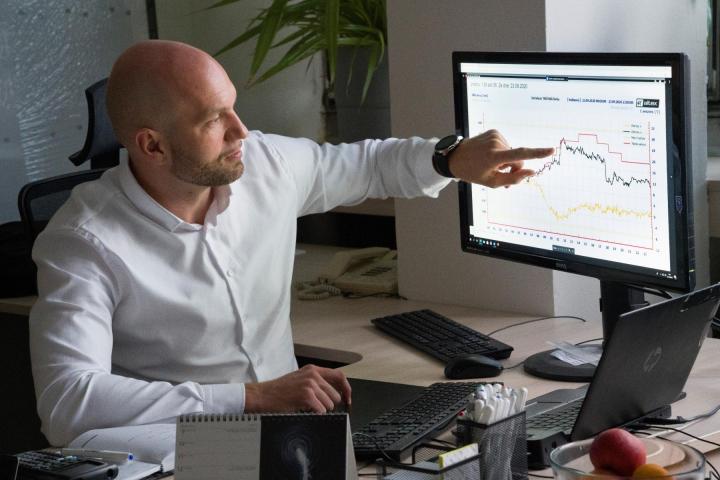
On the new footbridge, devices are placed that sense inclinations in the areas above the supports, which allow to monitor the rotation of the supporting structure in these places for individual loads and thus evaluate whether the footbridge actually behaves according to the assumed analysis. At the same time, there are meteorological sensors for temperature sensing, there are also laser meters for monitoring the dilatation of the structure - ie its shortening and stretching. "We monitor all these movements with respect to the temperature of the structure and they are compared with the computational prediction. The data is transferred to the central repository and monitoring center at the faculty. Here we evaluate them and hand them over to TSK Prague as the administrator of the bridge object, “explains doc. Lukáš Vráblík from the Department of Concrete and Masonry Structures.
The acquisition of the entire apparatus of measuring, recording and transmission equipment cost approximately CZK 1.2 million and was acquired by the Faculty of Civil Engineering within the project of the Ministry of Industry and Trade of the Czech Republic CZ.01.1.02 / 0.0 / 0.0 / 17_176 / 0015739: monitoring of construction objects ”from the Operational Program Enterprise and Innovation for Competitiveness. Experts from the Department of Concrete and Masonry Structures, together with representatives of the ALIMEX company, developed methodology, equipment and evaluation of online monitoring data for bridge structures. "One of our core outputs is a comprehensive system of control of selected fundamental parameters of the behavior of the structure," specifies doc. Vráblík. The sensors themselves and other devices were built into the footbridge during the assembly of the steel structure. However, they are located so that they can be repaired or replaced if necessary during the life of the bridge structure.
For monitoring, selected physical quantities were specified, which are representative for determining whether the structure works as it should. "These are mainly various deformations, such as deflections, turns, shortening or lengthening, due to the load of the footbridge and environmental influences, which are also monitored. What is unique is that critical intervals have been set for these monitored quantities. If the set limit values are exceeded, all administrators in the project will be notified and it will be possible to take further steps immediately, "describes the advantage of the system doc. Lukáš Vráblík. The data is scanned online 24 hours a day, 7 days a week and checked immediately.
"Although the footbridge is now in perfect condition, the data obtained is very valuable to us, especially in the future, when we will ensure its day-to-day management even in times of possible emergencies, such as floods. We thus receive continuous information about how the footbridge moves and behaves in all circumstances and throughout its life cycle, "says Jozef Sinčák, CEO of TSK Prague, the future footbridge administrator.
The Faculty of Civil Engineering is behind a dynamic test of the supporting structure of the footbridge, which took place at the turn of September and October. The test was divided into three parts. First, the important frequencies and shapes of the natural oscillations were determined from the oscillation of the footbridge caused by the oscillation exciter, and these were then compared with the assumed values from the project. This was followed by verification of the level of vibration of the bridge deck caused by differently arranged groups of pedestrians as well as groups of vandals on the footbridge, this was tested first with inactive dampers, which are attached to the supporting structure of the footbridge, and then after their commissioning. During all three parts of the dynamic test, the oscillation of the footbridge was measured by acceleration sensors in three mutually perpendicular directions. "The footbridge passed the dynamic test. In the experiment, we mainly focused on the dynamic behavior of the footbridge structure with respect to the comfort of pedestrians, where we checked the maximum acceleration of the structure while mimicking the normal operation of the footbridge. The test proved the necessity of shock absorbers to ensure comfortable operation of the footbridge, "explains prof. Michal Polák from the Department of Mechanics, Faculty of Civil Engineering, Czech Technical University, who organized the exam.
Experts from the Faculty of Civil Engineering of the Czech Technical University and the ALIMEX company also installed a similar monitoring system on the footbridge over the Otava in Písek, on the footbridge over the Vltava in Lužice nad Vltavou and on the new footbridge in Pilsen, which is currently under construction. It is also under discussion to use it in the planned reconstruction of the Barrandov Bridge in Prague.
More info can be found at fsv.cvut.cz.